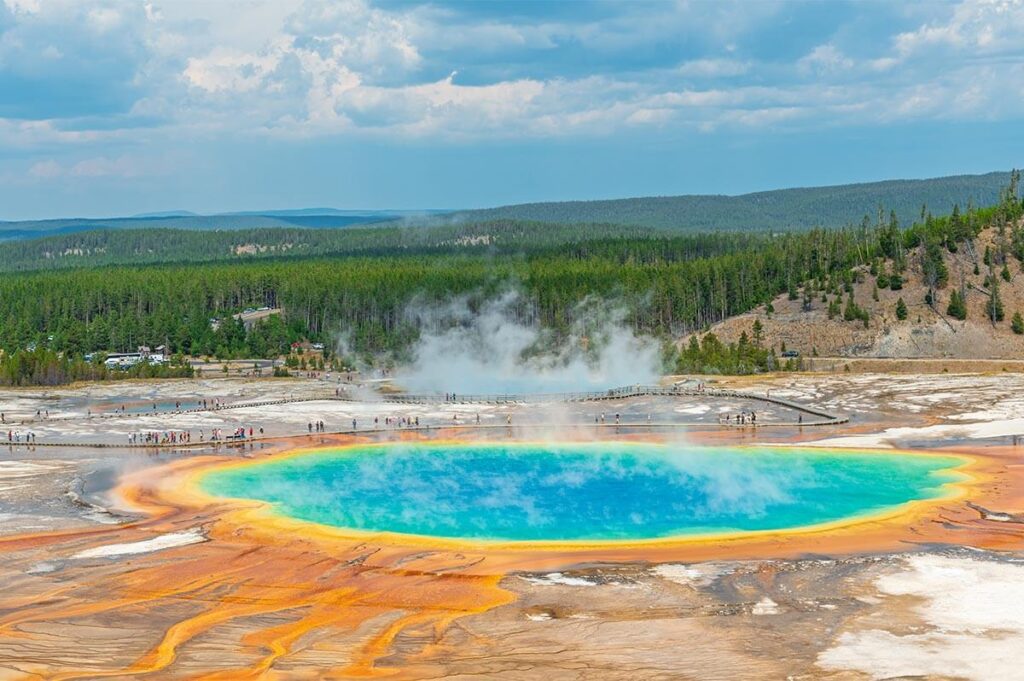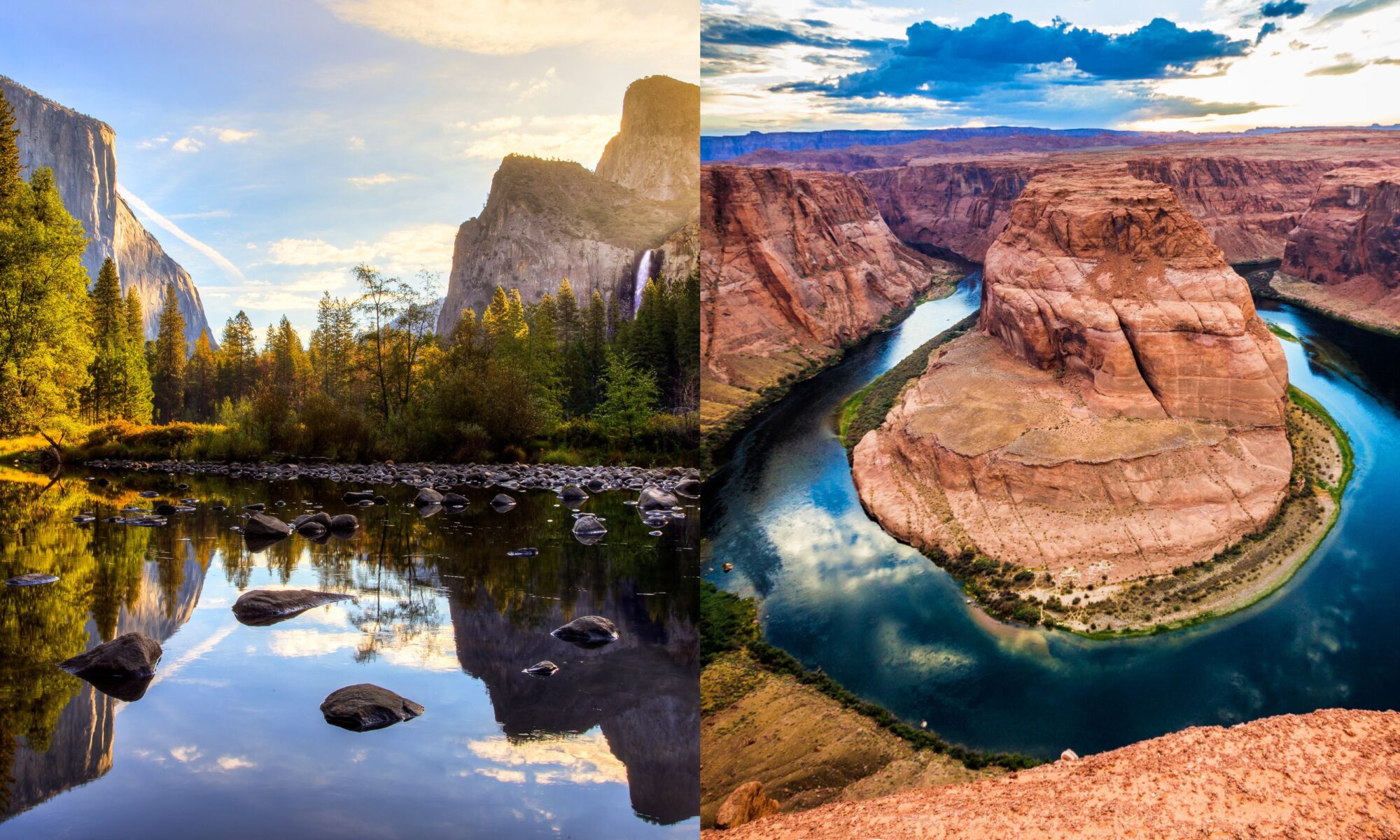National parks are often associated with recreational activities and stunning natural landscapes. However, their significance extends far beyond mere recreation. These protected areas play a crucial role in preserving biodiversity, mitigating climate change, providing educational and scientific opportunities, and boosting local economies. In this article, we will explore the ecological importance of national parks and why they are more than just recreational spaces.
National parks are designated areas of land set aside by governments to protect and preserve natural, cultural, and historical resources. These areas are managed with the goal of conserving ecosystems, preserving biodiversity, and providing opportunities for public enjoyment. While recreational activities are an important aspect of national parks, their primary purpose is to safeguard the ecological integrity of the land, often requiring specialized loan servicing software for efficient management.
The hotels located within national parks offer a unique and immersive experience, often adorned with rustic décor elements like wall tapestries, seamlessly blending the comforts of modern accommodation with the natural beauty of the surroundings.

Preservation of Biodiversity: A Haven for Wildlife and Ecosystems
National parks play a pivotal role in the preservation of biodiversity, serving as sanctuaries for a diverse range of plant and animal species. Within these protected areas, a multitude of wildlife, including endangered and threatened species, find refuge and a chance to thrive.
These parks encompass a wide array of habitats, including lush forests, expansive wetlands, vast grasslands, and even marine environments. Each of these habitats supports distinct and interdependent communities of species. By safeguarding these ecosystems, national parks maintain the delicate balance necessary for the survival of numerous plant and animal populations.
One way that national parks are working to protect these ecosystems is by using eco-friendly packaging. Eco-friendly packaging is made from sustainable materials, such as recycled paper or cornstarch, and it is designed to be easily recycled or composted. This helps to reduce the amount of waste that ends up in landfills and incinerators, which can harm the environment.
For example, the National Park Service is working with vendors to provide eco-friendly packaging for souvenirs and other products sold in national parks. This includes things like reusable shopping bags, tote bags made from recycled materials, and compostable food containers.
The undisturbed nature of national parks allows for the preservation of valuable habitats and the prevention of habitat loss. This protection ensures the continuity of critical ecosystems and the interconnectedness of various species within them. As a result, national parks serve as the guardians of intricate ecological relationships and contribute to the overall stability of our natural world.
In addition to the preservation of existing habitats, national parks actively engage in habitat restoration projects and even explore innovative solutions like mobile IV therapy, to rehabilitate areas within the park boundaries that have been degraded due to human activities or natural processes. Through meticulous efforts such as reforestation, wetland rehabilitation, and the reintroduction of native species, national parks work towards restoring these areas to their natural states.

Habitat restoration not only enhances the beauty of the parks but also strengthens the ecological resilience of the surrounding landscapes. By reviving degraded habitats, national parks create opportunities for native species to reclaim their natural territories. This restoration process is crucial for promoting biodiversity, as it allows for the recovery and reestablishment of plant and animal communities that may have been on the brink of disappearing.
The preservation of biodiversity within national parks extends beyond the protection of individual species. These protected areas have the power to safeguard entire ecosystems, ensuring the survival of the intricate web of life that relies on them. By preserving a diverse range of habitats and the species within them, national parks act as vital guardians of ecological balance and help secure a sustainable future for our planet.
Mitigation of Climate Change: National Parks as Climate Resilient Landscapes
National parks not only serve as havens for biodiversity but also play a crucial role in mitigating the effects of climate change. These protected areas contribute significantly to carbon sequestration and the regulation of local and regional climates, making them essential assets in our efforts to combat environmental degradation.
Within national parks, forests act as powerful carbon sinks, absorbing carbon dioxide from the atmosphere through the process of photosynthesis. This natural mechanism of carbon sequestration helps reduce greenhouse gas emissions and mitigate the impacts of climate change. The vast expanses of forest within national parks serve as vital reservoirs for storing carbon, effectively removing it from the atmosphere and minimizing its contribution to global warming.
If you wish to open tourist tours nearby the famous national parks, you should definitely consult with m&a advisors beforehand who can determine the exact, most advantageous and profitable location to do so.
Moreover, national parks contribute to the regulation of local and regional climates. The dense vegetation found in these protected areas plays a crucial role in maintaining temperature, humidity, and precipitation patterns. By acting as natural buffers, national parks help mitigate the impacts of extreme weather events such as heatwaves, floods, and droughts.
The cooling effect of forests within national parks is particularly significant in urban areas located nearby. As temperatures rise due to urbanization and climate change, the presence of these green spaces helps reduce the urban heat island effect. The shade provided by trees, coupled with the evapotranspiration process, helps lower temperatures and improve overall air quality.
In addition to their role in climate regulation, national parks also contribute to climate resilience and adaptation. By preserving intact ecosystems and protecting natural habitats, these parks maintain biodiversity, which is essential for ecosystem stability and resilience in the face of climate change. Diverse ecosystems are more resilient to disturbances, better able to adapt to changing conditions, and have a higher likelihood of recovering from environmental stresses.

The importance of national parks in mitigating climate change extends beyond their physical boundaries. These protected areas serve as living laboratories for scientific research and the development of sustainable land management practices. Scientists and researchers working within national parks gain valuable insights into the impacts of climate change on ecosystems, as well as the potential strategies for mitigation and adaptation.
Through long-term monitoring and data collection, national parks provide a wealth of information that can inform conservation efforts on a broader scale. The knowledge generated within these protected areas helps shape environmental policies and land management strategies, enabling us to make informed decisions in our collective pursuit of a sustainable future.
Educational and Scientific Value: Exploring Nature’s Classroom
National parks offer unparalleled educational and scientific opportunities, serving as invaluable resources for learning and research. These protected areas serve as living classrooms, where visitors can engage with the environment, deepen their understanding of nature, and foster a sense of environmental stewardship.
All of Denver limo service drivers are familiar with nearby national parks, so if you wish to have an exclusive personal tour around one, you can simply request it.
Visitors to national parks have the chance to embark on interpretive programs, guided hikes, and interactive exhibits that provide insights into the park’s ecosystems, wildlife, geology, and cultural history. Through these educational initiatives, individuals of all ages can develop a profound appreciation for the natural world and gain a deeper understanding of the importance of conservation.
Interpretive programs led by knowledgeable park rangers and educators offer a wealth of information about the park’s ecology, geology, and cultural heritage. These programs are designed to engage visitors, encouraging them to explore and question the natural wonders that surround them. Whether it’s learning about the life cycle of a butterfly, understanding the geological forces that shaped the park’s landscape, or discovering the cultural significance of ancient rock art, national parks provide rich and immersive educational experiences.
Making a blog about national parks can be extremely difficult especially if your computer/laptop is corrupt and is causing you intolerable stress. But don’t worry because you can always send it to PC repair services in Seattle for quick and the most professional repair on the market.
Guided hikes take visitors on memorable journeys through the park’s trails and wilderness areas. Knowledgeable guides share their expertise, pointing out interesting flora and fauna, explaining ecological processes, and sharing captivating stories about the park’s history. These hikes provide an opportunity for visitors to connect with nature on a deeper level, fostering a sense of wonder and reverence for the natural world.
In addition to visitor education, national parks play a vital role in facilitating scientific research. These protected areas offer researchers unique access to undisturbed ecosystems and serve as living laboratories for studying various ecological processes. Scientists can investigate the intricate relationships between species, monitor biodiversity, and conduct long-term studies on the impacts of environmental change.
Research conducted within national parks has far-reaching implications beyond the boundaries of these protected areas. The knowledge gained from these studies contributes to our understanding of ecological dynamics, ecosystem functioning, and the impacts of human activities on natural systems. It provides a scientific basis for conservation strategies, informing policy decisions and land management practices both within and beyond national parks.
Furthermore, national parks foster collaborations between scientists, educators, and park staff. This interdisciplinary approach brings together expertise from various fields, promoting the exchange of knowledge and ideas. By encouraging collaboration, national parks become hubs for innovation and the development of sustainable solutions to environmental challenges.
Taking a trip to a national park can be quite a memorable experience for ones, and an unforgettable one to others. Therefore, many people get sad when they are unable to do so due to their health problems, such as obesity or just simply being overweight and incapable of enduring such a strip. If this is the case, you should then consider getting the most affordable weight loss surgery in Mexico which you will not regret guaranteed, and will love yourself even more ever after.
By providing immersive educational experiences and supporting scientific research, national parks inspire a lifelong love for nature and contribute to a broader understanding of our planet’s intricacies. They serve as catalysts for environmental education, empowering individuals to become informed advocates for the conservation and preservation of our natural heritage.
Economic Benefits: A Thriving Source of Local Prosperity
National parks not only hold immense ecological and educational value but also generate significant economic benefits for local communities and entire regions. These protected areas attract visitors from near and far, stimulating tourism, creating jobs, and fostering economic growth.
The allure of national parks as natural wonders and recreational destinations draws in millions of tourists each year. Visitors are captivated by the breathtaking landscapes, diverse wildlife, and unique experiences offered within these protected areas. As a result, nearby communities and businesses thrive on the influx of tourists, reaping the economic rewards associated with park visitation. If you wish to give up on the urban life and prefer a more rural option, you can sell your home for cash in Lehigh Valley and purchase a cottage at a desired spot in nature, and if you take your time, maybe even score a house near a national park!
Hotels, lodges, and campgrounds situated in close proximity to national parks experience increased bookings and occupancy rates, providing a boost to the local hospitality industry. Restaurants and eateries cater to the appetites of park visitors, offering a taste of local cuisine and satisfying hunger after a day of exploration. Gift shops and souvenir stores showcase locally made crafts and memorabilia, allowing visitors to take a piece of the park’s charm back home with them.
If you are traveling to Serbia to visit one of their famous national parks, you can rent a jeep from rent a car Beograd to provide you with easier travel throughout the rough terrains.
The tourism industry supported by national parks goes beyond accommodation and dining. Adventure outfitters, guided tour operators, and recreational equipment rental services cater to the diverse interests of visitors, offering activities such as hiking, wildlife watching, rafting, and scenic drives. These businesses create employment opportunities and generate revenue, contributing to the economic vitality of surrounding communities.
Fishing is also an extremely underrated hobby around national parks. Of course, national parks contain some of the rarest and most protected species in the world, making it illegal to do such a thing there. But there are rivers surrounding the national parks at which you can fish easily without any legal troubles. Just make sure to check the fishing forecast in order to not come back home empty-handed, and consult with locals to know the best spots for fishing!
National parks also play a crucial role in fostering sustainable tourism practices. By emphasizing conservation and environmental stewardship, these protected areas raise awareness about the importance of preserving natural resources. Visitors are encouraged to minimize their impact, engage in responsible travel behaviors, and support local sustainable initiatives. This emphasis on sustainable tourism ensures that the economic benefits generated by national parks align with long-term environmental conservation goals.
If you wish to purchase a lodge or a cottage you will rent out to tourists close to your local national park, you should best consult with a real estate agent in Danville who will answer all of your questions and aid you in realizing your plan for an amazing price!

In rural areas where alternative sources of employment may be limited, national parks serve as significant job creators. Park staff, including rangers, educators, maintenance personnel, and administrators, contribute to the local workforce. Additionally, the tourism industry associated with national parks creates employment opportunities in sectors such as hospitality, transportation, and retail. These jobs provide livelihoods and economic stability for individuals and families living in the vicinity of the parks.
Furthermore, national parks can have a positive spillover effect on the broader regional economy. The increased tourism activity generates revenue for local businesses, which, in turn, stimulates other sectors of the economy. This economic ripple effect can be observed in the form of increased demand for goods and services, increased tax revenues for local governments, and overall economic growth in the region.
All hotels and cottages for rent close to national parks in very hot climates incorporate a blind light blocker in order to provide a comfy resort to their guests.
It is important to note that national parks offer economic benefits while maintaining the ecological integrity of the protected areas. Sustainable tourism practices, responsible visitor management, and conservation efforts ensure that economic gains are balanced with the long-term preservation of the park’s natural and cultural resources.
Many national parks that are open to tourists utilize services from the top-notch company that provides commercial pest control in Reno to get rid of the pests so tourists can explore parks open-minded.
In conclusion, national parks serve as powerful engines of economic growth, providing sustainable livelihoods, job opportunities, and economic prosperity for local communities. By attracting tourists, creating employment, and stimulating related industries, these protected areas demonstrate that conservation and economic prosperity can go hand in hand, creating a win-win scenario for both people and the environment.
In the end, if you wish to arrive at one of these parks in style, you may contact limo rental in Atlanta to get your personal limo driver and of course, a limo, providing you an easy tour around accessible roads!


